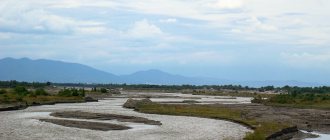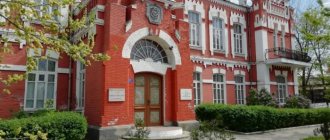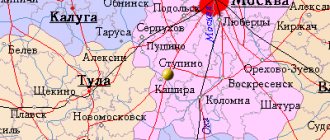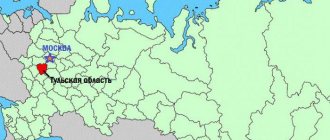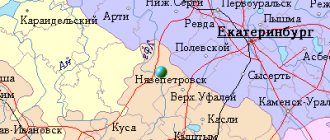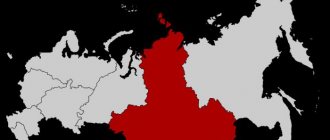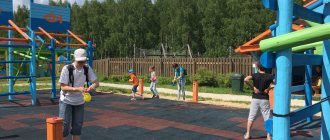Beloyarsky
(Khant. Nuvi sunkhum) is a city in Russia, the administrative center of the Beloyarsky district of the Khanty-Mansiysk Autonomous Okrug-Ugra.
Population - 19,797 people. (2021).
The city is located on the left bank of the Kazym.
As an administrative-territorial unit, Khanty-Mansi Autonomous Okrug has the status of a city of district significance. Within the framework of local self-government, it is included in the municipal district (Beloyarsky) and forms the municipal formation of the urban settlement of Beloyarsky
as the only settlement in its composition.
Story
Previously, this territory was called Khuv Sangkhum (Russian: Long Yar). It was a tasty place for deer, so collective farm and private herds grazed here. Carts of reindeer teams traveling along the winter road Berezovo - Polnovat - Amnya - Numto and back stopped here for the night to give the reindeer an opportunity to feed on white moss. After the discovery of gas fields in Yamal in 1959, the construction of gas pipeline compressor stations was required. In June 1969, a landing party of seven people landed on the banks of the Kazym River.
The first three construction organizations SU-9, SU-10 and SU-2 organized the Kazymsky site (later Beloyarsky), named after the Kazymsky village council of the Berezovsky district, on whose territory it was located.
In 1970, SU-35 was organized, which began construction of the first stage of the compressor station. At the same time, construction of housing and social and cultural facilities was carried out.
The first houses appeared on Lenin Street. A school was also built here, which opened in 1972, with 150 children studying there. In 1973, Beloyarsky was given the status of a village. In the fall of 1974, a village council of people's deputies was formed.
In the 1990s, a folklore archive of the Northern Khanty was created in the city, the long-term director of which was the Hungarian ethnographer researcher and teacher Eva Schmidt.
In 1996, a wooden temple of Seraphim of Sarov was built in Beloyarskoye. In 2001 it burned down. In 2003, a stone temple of Seraphim of Sarov was erected in its place.
Official portal of the Beloyarsk urban district
15.12.2021 On the return of overpaid funds for Rosreestr services or for information from the Unified State Register of Real Estate
On December 17, 2021 (Friday) at 12-00, a live broadcast will take place on the educational channel “Rosreestr Schools” on Instagram with the participation of Elena Shibarshina, an expert from the Rosreestr Office for the Sverdlovsk Region.
15.12.2021 Beloyarsk Central District Hospital
informs about the vaccination of the population against the new coronavirus infection in December 2021.
14.12.2021 Conference on the implementation of the law on “garage amnesty”
On December 13, a press conference was held on the implementation of the “garage amnesty” law. The press conference was attended by…
13.12.2021 Beloyarsk school No. 1 celebrated its 150th anniversary
On December 10, Beloyarsk School No. 1 celebrated its sesquicentennial anniversary among its closest and most sincere friends within the walls of the district cultural center.
13.12.2021 Power outage December 17, 2021
On December 17, 2021, a power outage is planned from 10.00 to 17.00. (Brusnyata settlement: Sovetskaya St. 84-134), from 14.00 to 17.00 (Beloyarsky settlement: Shkolnaya St., 2,3,4,5,6,7,8, Svobody St.) .
13.12.2021 Military-patriotic shift “I am a Youth Soldier”
In the country health camp “Zarya”, a profile military-patriotic shift “I am a Youth Soldier” was held for the Youth Army detachments of the Beloyarsk urban district as part of the health campaign - 2021. The shift was dedicated to the Day of Heroes of the Fatherland.
12.12.2021 The traffic police informs
In order to prevent child road traffic injuries in the operational service area of the State Traffic Inspectorate of the city of Zarechny, from December 20, 2021 to January 16, 2022, the preventive event “Christmas...
12.12.2021 The next stage of the “Safe Road” event
Within 4 days from December 18, 2021, remote settlements, as well as federal and regional roads, will come under the control of traffic police officers. Inspectors will stop each vehicle, and if drivers are found with a…
11.12.2021 December 12 – Constitution Day of the Russian Federation
Congratulations on Constitution Day from the Governor of the Sverdlovsk Region Evgeny Kuyvashev.
08.12.2021 A pharmacy has reopened in Bolshebrusyansky
According to a representative of the Administration of the Beloyarsk City District, currently the powers to organize a network of state pharmacy enterprises in our district have been transferred to the state autonomous institution of the Sverdlovsk region “Pharmac…
08.12.2021 Day of Heroes of the Fatherland
On December 9, our country celebrates the Day of Heroes of the Fatherland. This memorial date was established in 2007. Russians, awarded the honorary title of heroes, deserve to have their own holiday.
07.12.2021 Hotlines from the tax service
Interdistrict Inspectorate of the Federal Tax Service of Russia No. 29 for the Sverdlovsk Region will conduct several “hotlines” in December...
07.12.2021 MODERN ELECTRONIC SERVICES OF RUSSIAN POST JSC
In 2021, residents of the Sverdlovsk region began to more actively use the Russian Post mobile application to assess the quality of work of post offices. On average, residents of the region left more than 30 thousand reviews monthly, of which every fifth review was published...
07.12.2021 The Sverdlovsk region adopted a budget for 2022 and the planning period
On December 7, deputies of the Legislative Assembly of the Sverdlovsk Region adopted in three readings the bill on the regional budget for 2022 and the planning period. The main priorities of the main financial document of the region were announced by Governor Evgeny Kuyvashev.
07.12.2021 Beware, scammers!
In the Sverdlovsk region, deception of citizens by scammers still remains a pressing problem.
Coat of arms
In a dissected azure (blue, blue) and green field there is a standing silver reindeer. At the golden tip there is an azure ball framed by a silver flame running through the middle.
The golden base of the heraldic shield represents the wealth of the region's subsoil - the basis of its well-being. Along the golden base there is a thread of a gas pipeline with a point of a blue torch, the Beloyarsky point on the map, which appeared thanks to this gas pipeline.
The two colors of the shield field are green and blue, a symbol of the two primary colors of nature: green for forests, blue for rivers and lakes. These are the colors of the flag of the Khanty-Mansiysk Okrug, of which the region is an integral part.
Against the background of the blue-green field of the heraldic shield is the silhouette of a white reindeer. It symbolizes the city’s territorial affiliation with the northern regions.
The white deer is like the pure protective spirit of the eternal, living nature of the region.
The coat of arms is decorated with a national pattern - a symbol of the ancient culture of the indigenous peoples (Khanty and Mansi).
The author of the Belykh coat of arms is Vladislav Savvovich, born 02/01/1948, lives in Beloyarskoye.
Geographical position
Beloyarsky district is located in the northern part of the Khanty-Mansiysk Autonomous Okrug. It borders in the west with Berezovsky, in the southwest - with Oktyabrsky and Khanty-Mansiysk, in the southeast - with the Surgut region of the Khanty-Mansi Autonomous Okrug, in the east and north - with the Yamalo-Nenets Autonomous Okrug. The area occupies 41.65 thousand square meters. km. Russians (64.3%), Khanty (8.1%), Ukrainians (7.83%), Tatars (4.63%), Belarusians (1.6%) and representatives of other nationalities live here - a total of 29,876 people ( 2014)
The administrative center of the district is the city of Beloyarsky (63°43′ N, 66°40′ E).
Climate
The climate of the area is sharply continental, with rapid changes in weather conditions, which is especially noticeable in the off-season. Severe winter with snow cover 50-60 cm high lasts from November to March. Daytime air temperature is about -17 °C, night -24 °C. Summer in the Beloyarsk region is moderately warm: about +18 °C during the day, +14 °C at night. The number of days without frost in a year is from 130 to 145. The annual precipitation is from 400 to 550 mm.
Natural attractions
The Beloyarsk Territory is located on the right bank of the Ob, the main water artery of the region. The Kazym, Lykhma, Sorum, Pomut, Kuriekh rivers also flow here, and there are many lakes, the largest being Numto, Ai-Novy-Ying-Lor and Un-Novy-Ying-Lor.
45% of the territory is occupied by forests where pine, birch, spruce, cedar, and larch grow. The forests are rich in mushrooms (white mushroom, milk mushroom, boletus, boletus), berries (lingonberries, blueberries, cranberries, princelings, cloudberries, blueberries), nuts, and medicinal plants (rose hips, wild rosemary, Siberian fir).
Representatives of the region's fauna include brown bear, sable, marten, red fox, squirrel, black grouse, white partridge, curlew, and woodcock. About 20 species of commercial fish live in rivers and lakes: sturgeon, sterlet, nelma, muksun, roach, burbot, pike, bream.
On the territory of the Beloyarsk region there are hydrocarbon deposits, the largest being Pakhromskoye gas condensate, Verkhne-Kazymskoye, Vatlorskoye, Severo-Vatlorskoye, Lungorskoye oil fields.
In the area there is the Sorumsky nature reserve, where rare species of plants (Hebridean palmatera, small egg capsule, Lapland buttercup) and animals (white-tailed eagle, osprey, falcon) are found. Also located here is the Numto State Natural Park, where the zones of light forests of the taiga and tundra adjoin and are home to over 150 species of birds, including the white-tailed eagle, the Siberian crane, and the black stork.
Story
Since the 15th century, on the territory of the modern Beloyarsk region there was the Kazym principality. The indigenous population was engaged in reindeer herding, hunting and fishing. These traditional crafts continue to this day (for example, in the Numto area). Since the 70s XX century The gas transportation specialization of the region began to take shape.
Beloyarsky district is one of the youngest districts of Ugra. It was formed (split from the Berezovsky district) in 1988 and became part of the Khanty-Mansiysk Autonomous Okrug, and the Beloyarsky village became a city of district subordination.
More than 150 archeological and ethnographic monuments have been identified on the territory of the region - from the Stone Age to the late Middle Ages. The most significant are Kaksinskaya Mountain on the Amnya River, Khullor, Yuilsk and Numto.
Famous people
Heroes of the Soviet Union N.A. Popov were born in the area. and Borisov V.P. Currently, the most famous artists are Anatoly and Yuri Grishkin, natives of the village of Tugiany.
How to get there
The main mode of transport is air. There is an airport in the regional center, and there are 11 registered sites in populated areas.
In 2013, the Yugorsk - Sovetsky - Verkhnekazymsky - Nadym highway, border of the Khanty-Mansi Autonomous Okrug, opened in the region; winter roads are also functioning, including Lykhma - border of the Oktyabrsky District, which is connected to the Russian road network.
During the navigation period, motor ships ply along the routes "Beloyarsky - Priobye" and "Beloyarsky - Polnovat - Vanzevat".
Dynamics by year
Since the pre-war period, or more precisely since 1939, here is how the population in the region has changed:
- In 1939, the number of people living in the region was only 92,932.
- By 1959 it had increased to 123,926.
- By 1979 it was 569.139.
- In 1989 – 1.268.439.
- By 1999, the population continued to increase to 1,359,069 people.
- In 2009 it was equal to 1,519,962.
- For 2021, this figure was 1,663,795 citizens.
- And gradual growth continues through 2021 inclusive, thereby increasing the number of residents in this territory to more than 1.6 million.
It is worth noting that during the entire Soviet period of the Khanty-Mansi Autonomous Okrug and the Russian period, the population in the region increased almost continuously. The only exception is the period from 1992 to 1993. During this period, there was a decrease in the number of residents in the region by approximately 13,000 people. But then, starting in 1993, growth began to continue. This was achieved thanks to a developed economy and oil and gas deposits.
It is the oil and gas industry that gives economic impetus to the region and the opportunity to implement various economic and social programs. In addition, the high level of salaries, in comparison with other regions, made it possible to attract workers from certain industries here.
Cities
The administrative center is the city of Khanty-Mansiysk. The Autonomous Okrug also includes a number of the following large cities:
- Beloyarsky - the population here exceeds a little more than 19 thousand people.
- Kogalym - about 67 thousand people live in the agglomeration.
- Langelas - just over 44,000 inhabitants.
- Nefteyugansk is a large city by the standards of the region with more than 127,000 inhabitants.
- Nizhnevartovsk - more than 277,000 citizens live on its territory.
- Surgut is the largest populated area, with a population of more than 380 thousand people.
- Yugorsk with a population of 37,000, as well as a number of smaller settlements and smaller settlements.
